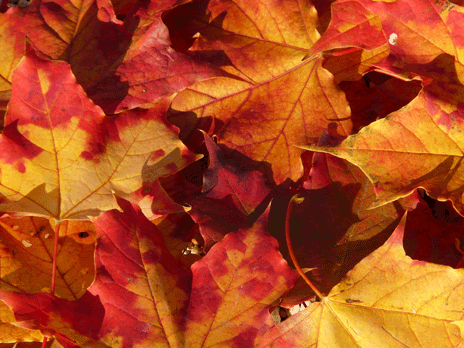This year the UK has reportedly experienced the driest September since 1910 with predictions for the south east of England to continue to experience lower than average rainfall into October. With the variability in the weather it is difficult to know when to expect the autumnal weather to descend upon us. But, despite the dry, warmer weather the leaves have started to drop from trees, which is always the first indication of autumn and the start of season-related pond maintenance.
Autumn is generally related to cold, frosty nights resulting in plants taking on a droopy look. An important task is therefore to dead-head plants and clear your pond of rotting vegetation to ensure that the water quality remains in a healthy state. A way of avoiding vegetation rotting in your pond is to cut back or remove plants with leaves below the water level.
Falling leaves presents the biggest problem to pond owners. A useful tip is to put a net over your pond in autumn. Leaves need to be removed from a pond before they sink to the bottom and start to decay. As the weather cools amphibians will have left your pond and insects will be over-wintering in the mud at the bottom – a least harmful time for wildlife so no need to be concerned about having to scoop leaves out of your pond. 
This is also a good time to check whether your pond liner requires any repairs and remains well protected around the edges. Any damage, can in most cases be fixed using a pond liner repair kit or waterproofing sealant. The area to be patched will have to be completely dry so you will need to lower the water level to just below the leak. This may mean removing a few marginal plants too, to get good access to the liner.
Fish become less active as the weather cools and therefore don’t require the same amount of food as they do during the summer months. It is therefore important that you start to monitor their eating habits. For some fish the general rule is that you will know when to start reducing the amount of food when they don’t eat all that is given to them. Any unconsumed food should be removed to avoid it left to decompose in the water. Koi, however may continue to eat what is given to them, so they require a change of diet as winter approaches – from October to the start of spring. A high protein diet during summer allows them to store excess energy that they will consume as reserves through the winter months. Fish, must therefore be offered a lower protein diet when the water starts to cool off – when it drops to consistently below 14 degrees Celsius. A lighter diet will keep waste and water pollution to a minimum.
Plants provide a form of shelter to fish to shield them from any creature that maybe tempted to prey on them. If you have cut back a large portion of aquatic plants it maybe an advantage to your fish to place another form of shelter in the pond such as plastic piping wide enough for them to swim into.
Are there another pond maintenance steps you are aware of that we have left out? If so, we would love to hear them.






I appreciate, cause I found just what I was looking for. You’ve ended my four day long hunt! God Bless you man. Have a great day. Bye
I am curious to find out what blog system you are using? I’m having some small security issues with my latest site and I would like to find something more safeguarded. Do you have any suggestions?
Your data is extremely helpful
Andrea Pirlo http://www.dealpharmarx.com/hunter-hayes-will-whats-necessary-love-new-want-crazy-music-video/
Truly… such a invaluable internet site
Franz Beckenbauer http://demo2.citykx.com/home.php?mod=space&uid=128111&do=profile
You’ve gotten incredible information at this point
Joe Cole http://sportsnationca.com/members/claribelcleven/activity/574170/